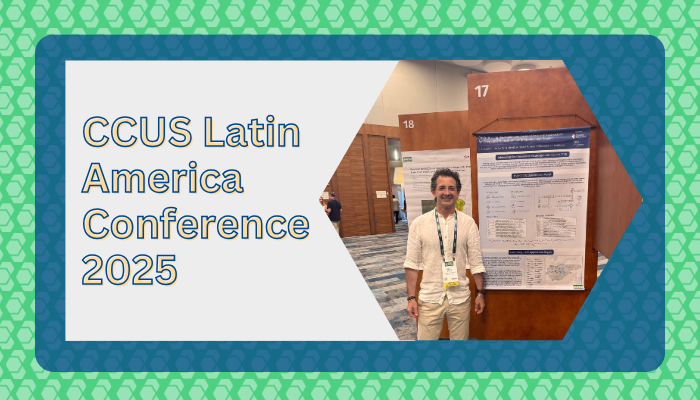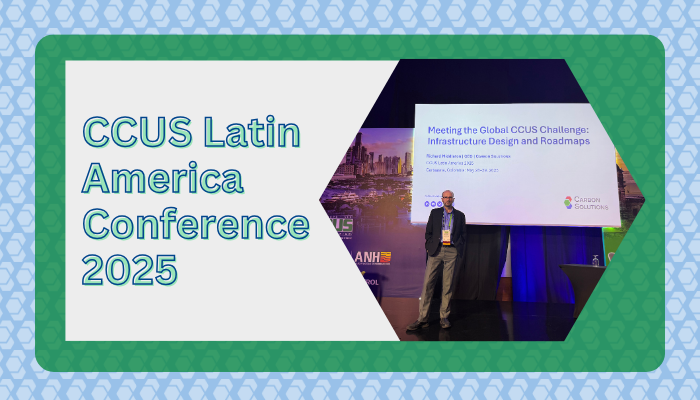Presenting at CCUS Latin America 2025

Our team recently shared a new modeling approach at CCUS Latin America 2025 that integrates hydrogen and CO₂ infrastructure planning. The poster, led by Juan Carlos Duque, Qasim Mehdi, and partners at GTI Energy, focuses on Appalachia—using a mixed-integer linear programming model to optimize where hydrogen is produced and stored, where CO₂ is captured, and […]
Presenting at CCUS Latin America 2025

At CCUS Latin America 2025, Erin Middleton shared Carbon Solutions’ work on planning and modeling regional carbon hubs in the U.S.—with Wyoming as a key example. Her presentation covered our work on the Wyoming Trails Carbon Hub (WyoTCH) and Carbon Blueprint projects, showing how emissions data, regulatory timelines, land ownership, and subsurface storage all come […]
Webinar: Scaling Cost-Effective CCUS Infrastructure for Hard-to-Abate Industries

How can we build cost-effective CCUS infrastructure to decarbonize hard-to-abate sectors like concrete, cement, steel, and chemicals?
In this recorded webinar, Carbon Solutions and the MIT Concrete Sustainability Hub explore how to reduce investment barriers to large-scale carbon capture, transport, and storage (CCUS) around industrial carbon hubs.
Speakers: Marcos Miranda – Carbon Solutions, Elizabeth Moore – Massachusetts Institute of Technology (MIT)
This session focuses on the concrete and cement sector, using spatial-economic modeling to identify cost-effective strategies for infrastructure buildout and deployment at scale.
📅 Originally aired: April 30, 12–1 PM ET
Presenting at CCUS Latin America 2025

At CCUS Latin America 2025, our CEO Richard Middleton walked through the advanced modeling tools that Carbon Solutions uses to help answer this question. His presentation covered how SimCCS PRO, CostMAP PRO, CO₂NCORD, and SCO₂T PRO work together to guide infrastructure decisions from start to finish—whether you’re planning CO₂ pipelines across Wyoming or mapping capture-to-storage […]
Report: Gigatonne One: A CCS roadmap for the United States and beyond

Read the full report here.
Report: Geospatial Estimation of the Electric Power Potential in Sedimentary Basin Geothermal Resources Using Geologically Stored Carbon Dioxide

Read the full report here.
Report: Keeping Up With the Times: Modelling Temporally Phased CO₂ Capture and Storage Infrastructure

Read the full report here.
Report: SimCCS: An open-source tool for optimizing CO₂ capture, transport, and storage infrastructure

Report: CostMAPᴾᴿᴼ: Addressing the Massive-Scale CO₂ Pipeline Challenge

Read the full report here.
Webinar: Finding New Opportunities for Carbon Capture with 𝘊𝘖₂𝘕𝘊𝘖𝘙𝘋

The primary objective of the Uinta Basin CarbonSAFE phase II project is to establish the technical and economic feasibility of a commercial-scale CO2 geological storage complex in the northeast Uinta Basin, Utah, to sequester at least 50 million metric tons of captured CO2 securely and economically from the Deseret Power Electric Cooperative Bonanza Power Plant and other sources in 30 years.
